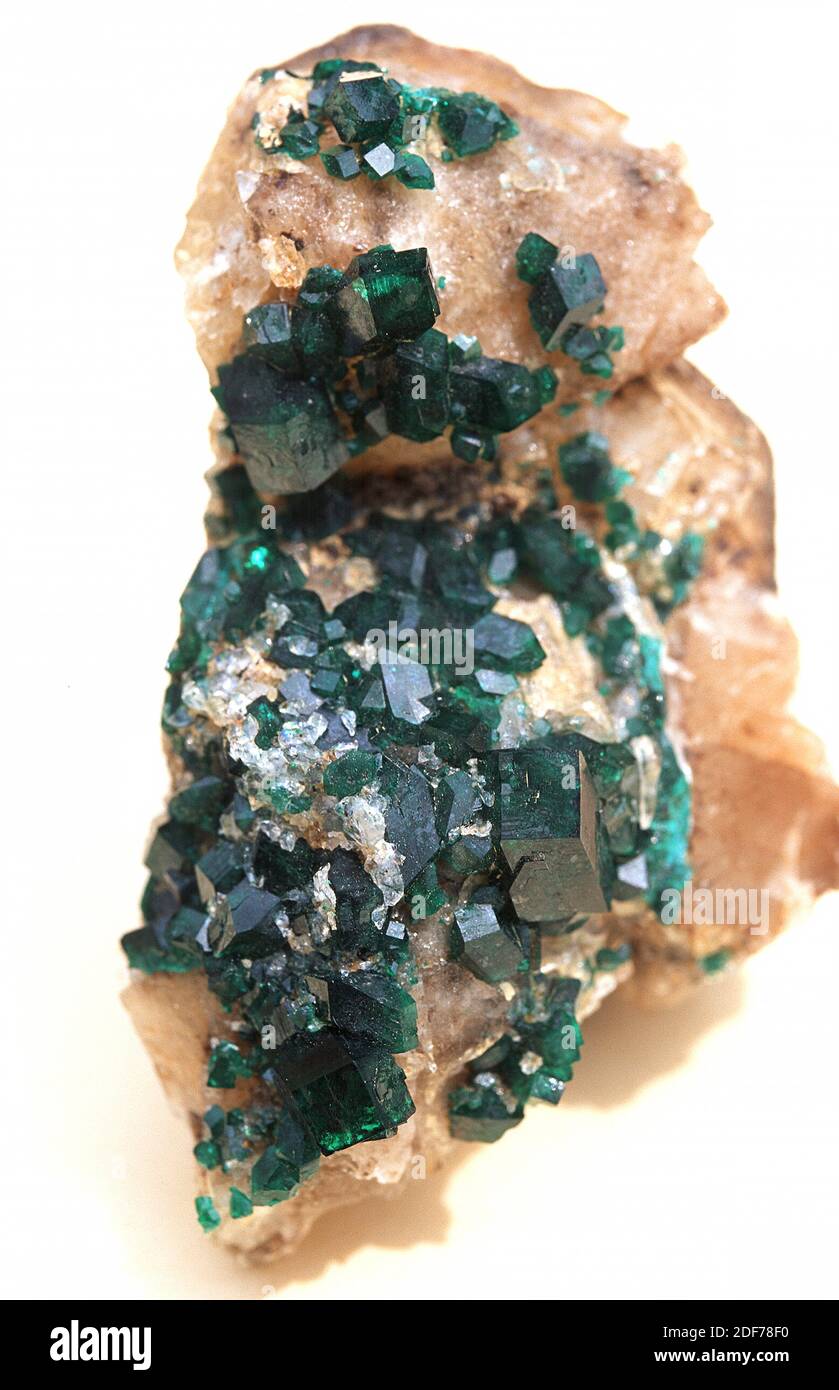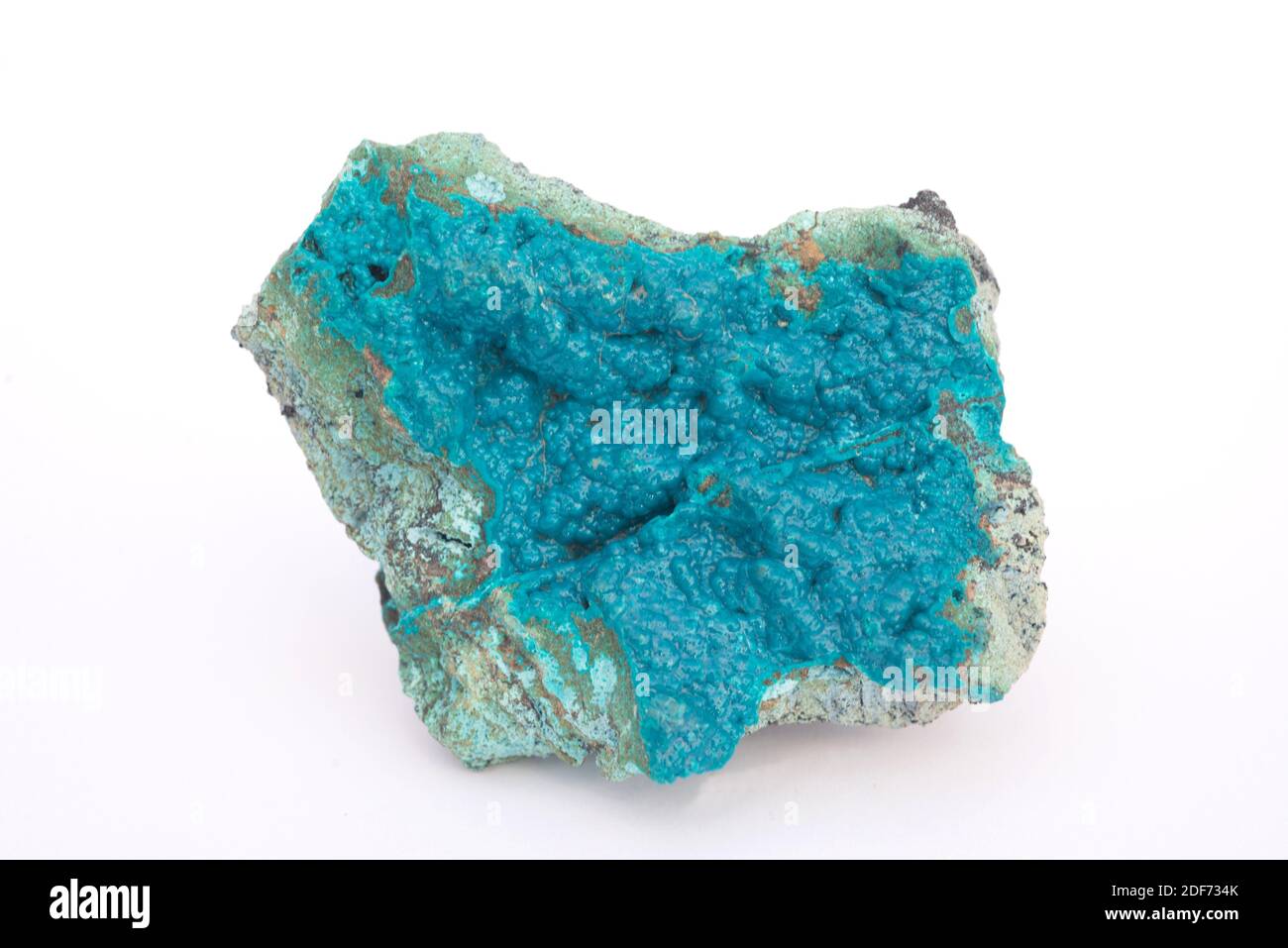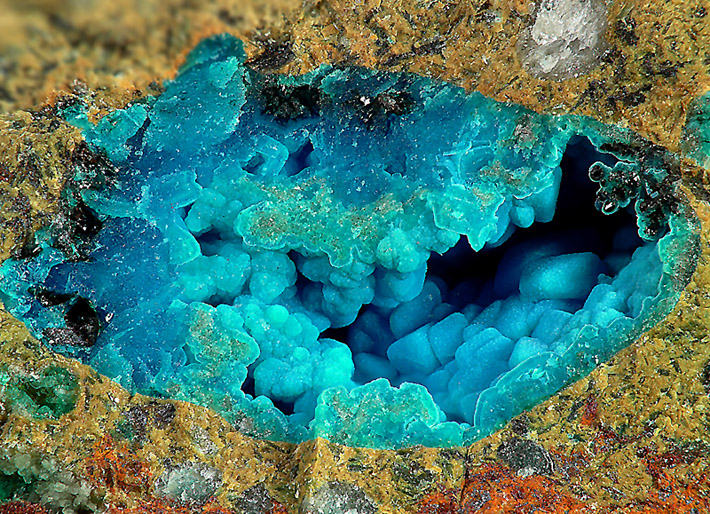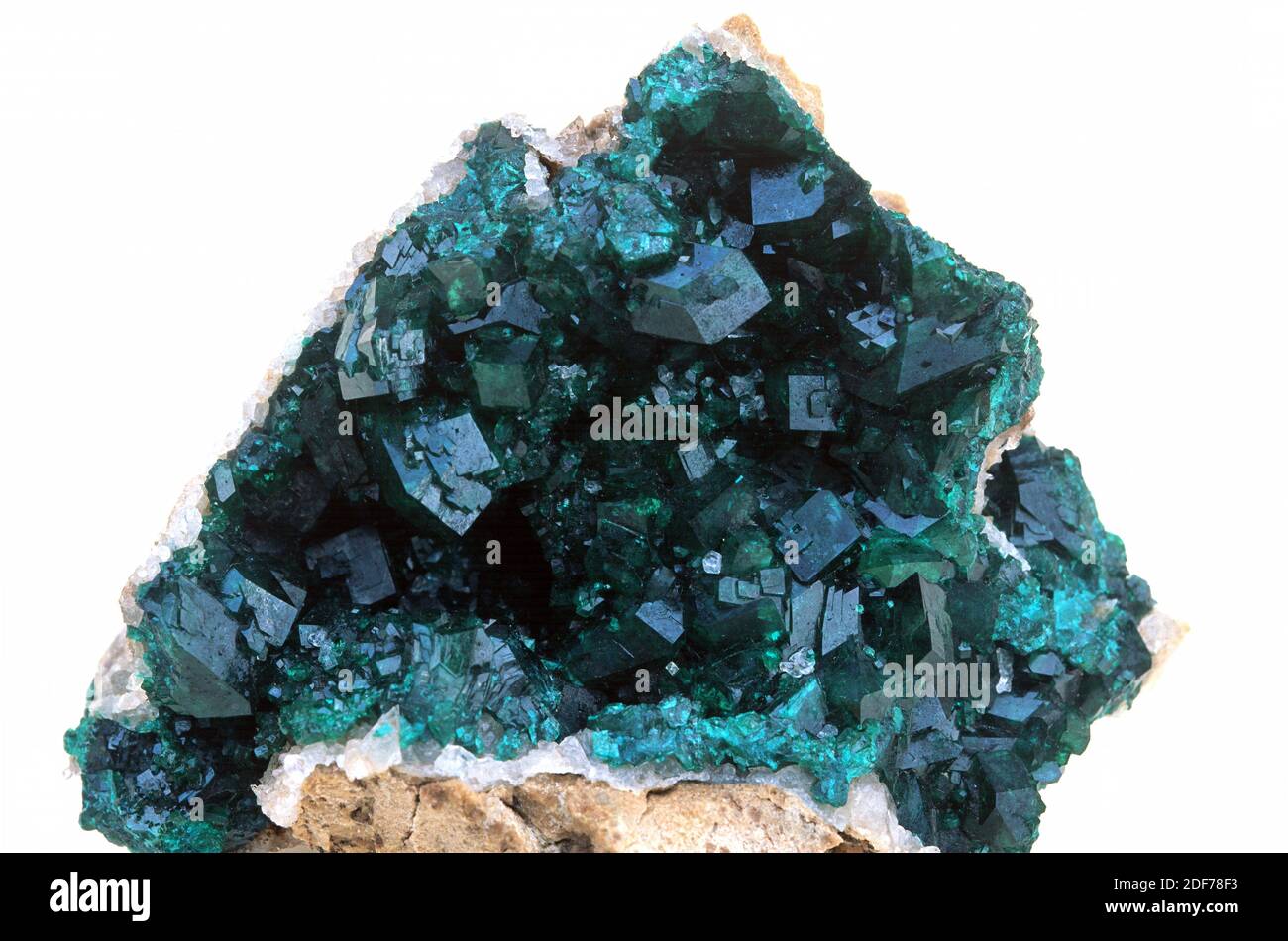
Dioptase is a copper silicate mineral. Crystallized sample Stock Photo Alamy
Copper silicate mineral chrysocolla Silicate minerals are rock-forming minerals made up of silicate groups. They are the largest and most important class of minerals and make up approximately 90 percent of Earth's crust. [1] [2] [3] In mineralogy, silica (silicon dioxide, SiO2) is usually considered a silicate mineral.

Copper Silicate Hydroxide Shattuckite Minerals and gemstones, Rocks and crystals, Rocks and
Atomic number: 29 Atomic weight: 63.55 Density: 8.96 g/cm³ Melting point: 1,083 °C (1,981 °F)

DIOPTASE (Hydrated Copper Silicate) crystals from AltynTyube, Karagandy, Kazakhstan. Rocks
Nanosized copper silicates with three different structural morphology (amorphous, nanotubes and MEL) were prepared using different synthesis methods. The physico-chemical properties of copper silicates were characterized by XRD, FT-IR, SEM, HRTEM, N 2 -physisorption, XPS and H 2 -TPR techniques. The results indicated that the preparation.

Macro Mineral Stone Dioptase Silicate Copper On A White Background Stock Image Image of glassy
Kinoite ( Ca 2 Cu 2 Si 3 O 8( OH)4 [2] [3] or Ca2Cu2Si3O10 · 2 H 2 O [4]) is a light blue copper silicate mineral. It is somewhat scarce. It has a monoclinic crystal system, vitreous luster, and is transparent to translucent. It can be found in the Santa Rita Mountains, the Christmas Mine at Christmas, Arizona and a few other copper mines.

Chrysocolla (hydrated copper silicate) is a mineral and a minor ore of copper, Southern Arizona
Following is a list of minerals that serve as copper ores in the copper mining process: [1] References ^ Samans, Carl H. Engineering Metals and their Alloys MacMillan 1949

Chrysocolla is a copper silicate mineral Stock Photo Alamy
Copper-bearing silicate minerals are relatively resistant to hydrometallurgical leaching. More efficient extraction of this residual Cu requires detailed knowledge of the mineralogical and textural settings of the minerals, which we outline in this study. Supergene oxidation and alteration of Fe-rich rocks at the Salobo iron-oxide copper-gold.

Chrysocolla a hydrated copper silicate mineral with formula (Cu,Al)2H2Si2O5(OH)4·nH2O. Locality
Enjoy our calming products, including great savings and free delivery on orders over £40. View HolisticShop's Crystals online, helping personal development and spiritual insight.

Macro Mineral Stone Dioptase Silicate Copper On A White Background Stock Photo Image of
Nanosized copper silicates with three different structural morphology (amorphous, nanotubes and MEL) were prepared using different synthesis methods. The physico-chemical properties of copper.

Macro Mineral Stone Dioptase Silicate Copper on a White Background Stock Photo Image of
Come and check at a surprisingly low price, you'd never want to miss it. Awesome & High Quality Here On Temu. New Users Enjoy Free Shipping & Free Return.

Macro Mineral Stone Dioptase Silicate Copper on a White Background Stock Image Image of copper
Copper-bearing veins that cross-cut the Salobo supergene rocks contain a range of Cu minerals of varying solubility, and these veins commonly include the Cu-silicate mineral chrysocolla. This chrysocolla is often intimately intergrown (10-100 µm scales) with other vein minerals, especially the Cu-phosphate mineral pseudomalachite, and is also intergrown with variably-altered host rock minerals.

Macro Mineral Stone Dioptase Silicate Copper on a White Background Stock Photo Image of
Copper dissolves in silicate melts (natural magmas) dominantly as Cu 1+ and perhaps in very minor amounts as Cu 2+.Copper is believed to dissolve in silicate melts mainly as CuO 0.5.The solubility of Cu in sulfur-free silicate melts increases with increasing temperature and increasing oxygen fugacity (Liu et al. 2015 and references therein). Zajacz et al. (2012, 2013) also suggest that Cu.

Chrysocolla The Bright BlueGreen Copper Silicate
The mineralogical process data indicated that there were four occurrence states of copper in copper minerals 8: copper in mineral state (70%), isomorphic copper (13.32%), adsorbed copper (12.05%.

Macro Mineral Stone Dioptase Silicate Copper On A White Background Stock Photo Image of
Toussaint determined the DTA of several copper silicate minerals including dioptase and suggested the mineral contained water only and not OH units. Rozinova and Muratov determined the TG and DTA of a wide range of copper containing minerals and concluded that the product of the thermal decomposition was tenorite. Kiseleva.

Dioptase is a copper silicate mineral. Crystallized sample Stock Photo Alamy
Andrew Alden Updated on October 16, 2019 The silicate minerals make up the great majority of rocks. Silicate is a chemical term for the group of a single atom of silicon surrounded by four atoms of oxygen, or SiO 4. They come in the shape of a tetrahedron. 01 of 36 Amphibole (Hornblende)

Plancheite (hydrated copper silicate mineral) from Tantara Mine, Shinkolobwe, Katanga, Katanga
Copper silicate may refer to any silicate of copper generally; more specifically: Minerals Apachite, a copper silicate mineral with a general formula of Cu 9 Si 10 O 29 ·11H 2 O Dioptase, a cyclosilicate mineral - CuSiO 3 ·H 2 O Gilalite, a copper silicate mineral with chemical composition of Cu 5 Si 6 O 17 ·7 (H 2 O).

Macro Mineral Stone Dioptase Silicate Copper White Background Close — Stock Photo © coldmoon
The partitioning of copper between silicate melts and two-phase aqueous fluids: An experimental investigation at 1 kbar, 800 °C and 0.5 kbar, 850 °C. Contrib. Mineral. Petrol. 121, 388-399 (1995).